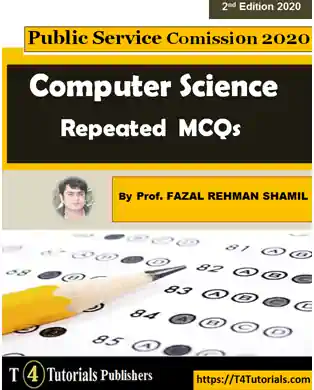Operating System Multiple Choice Questions
1. Which one of the following resources are always be protected by the operating system?
(a) CPU
(b) I/O
(c) Memory
(d) B and A
(e) All of these
(f) None of these
2. In which of the following multiplexing, Resource management can be done?
(a) Space division multiplexing
(b) Multiplexer
(c) Time-division multiplexing
(d) A and C
(e) All of these
(f) None of these
3. In the following software types which one is used to simplify using Systems software?
(a) Timesharing
(b) Operating environment
(c) Spreadsheet
(d) Multitasking
(e) All of these
(f) None of these
4. Where the operating system keeps the information of files in a table?
(a) Directory Index Table
(b) File Allocation Table
(c) File Index Table
(d) File Folder Table
(e) All of these
(f) None of these
5. Which one of the following Scheduling algorithm allocates the CPU first to the process that requests the CPU first?
(a) Priority scheduling
(b) Shortest job scheduling
(c) First-come, first-served scheduling
(d) D and A
(e) All of these
(f) None of these
6. Where the Job Control Language (JCL) statements are used to?
(a) to Specify the operating system, the beginning and end of a job in a batch
(b) Allocate the CPU to a job
(c) Read the input from the slow-speed card reader to the high-speed magnetic disk
(d) C and D
(e) All of these
(f) None of these
7. How can you define Time Quantum in the following above?
(a) the multilevel queue scheduling algorithm
(b) priority scheduling algorithm
(c) shortest job scheduling algorithm
(d) round-robin scheduling algorithm
(e) All of these
(f) None of these
8. Which one of the following does not belong to Documentation?
(a) Documentation increases the maintenance time and cost
(b) The documentation gives a better understanding of the problem
(c) Documentation, of a system, should be as clear and direct as possible
(d) C and D
(e) All of these
(f) None of these
9. What does the Priority scheduling algorithm do?
(a) Equal priority processes can not be scheduled
(b) CPU is allocated to the process with the lowest priority
(c) CPU is allocated to the process with the highest priority
(d) B and A
(e) All of these
(f) None of these
10. Which of the following is belong to Scheduling?
(a) Unrelated to performance consideration
(b) Not required in uniprocessor systems
(c) Allowing jobs to use the processor
(d) The same regardless of the purpose of the system
(e) All of these
(f) None of these
11. When a system is in a Safe-state?
(a) Safe sequence
(b) Safe allocation
(c) Safe resource
(d) C and D
(e) All of these
(f) None of these
12. How many processes are involved in the sharing of common data (Dekker’s algorithm implements mutual exclusion)?
(a) 4
(b) 12
(c) 1
(d) 2
(e) All of these
(f) None of these
-
Next Operating System MCQs
-
- Operating System MCQs
- Operating System Multiple Choice Questions
- Operating Systems OS MCQs-Important
- File system Interface MCQS Questions Answers in Operating Systems
- Virtual Memory MCQS Questions Answers in Operating Systems
- Operating System Structures MCQs
- Process Synchronization Solved MCQs Questions Answers
- Deadlock MCQs Questions Answers
- Memory Management MCQs Questions Answers
- Unix Operating system solved MCQ’s Questions Answers
- Primary Memory Solved MCQs Questions Answers
- Linux process Management MCQs – Solved
- Linux File Permissions Solved MCQs
- Linux Startup and Shutdown MCQs
- Linux File Permissions MCQs Questions Answers
- Linux process Management MCQs – Solved
- Process Synchronization Solved MCQs Questions Answers
- Operating System Structures MCQs
- CPU Scheduling Solved MCQ’s Questions Answers
- Deadlock MCQs Questions Answers
- Memory Management MCQs Questions Answers
- File system Interface MCQS Questions Answers in Operating Systems
- Virtual Memory MCQS Questions Answers in Operating Systems
- Operating System Multiple Choice Questions Answers
-

